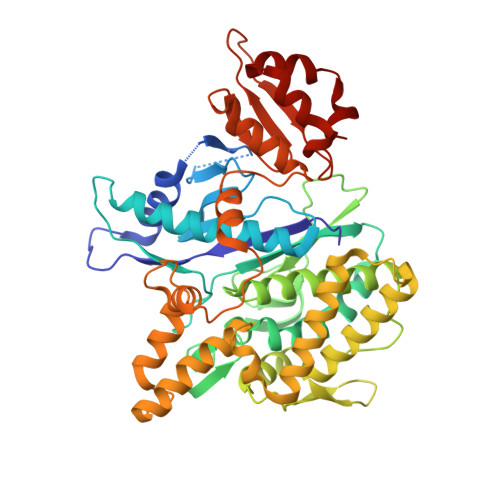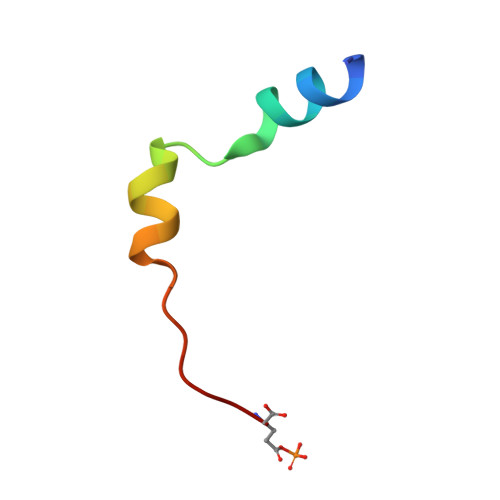Structures of prokaryotic ubiquitin-like protein Pup in complex with depupylase Dop reveal the mechanism of catalytic phosphate formation.
Cui, H., Muller, A.U., Leibundgut, M., Tian, J., Ban, N., Weber-Ban, E.(2021) Nat Commun 12: 6635-6635
- PubMed: 34789727
- DOI: https://doi.org/10.1038/s41467-021-26848-x
- Primary Citation of Related Structures:
7OXV, 7OXY, 7OY3, 7OYF, 7OYH - PubMed Abstract:
Pupylation is the post-translational modification of lysine side chains with prokaryotic ubiquitin-like protein (Pup) that targets proteins for proteasomal degradation in mycobacteria and other members of Actinobacteria. Pup ligase PafA and depupylase Dop are the two enzymes acting in this pathway. Although they share close structural and sequence homology indicative of a common evolutionary origin, they catalyze opposing reactions. Here, we report a series of high-resolution crystal structures of Dop in different functional states along the reaction pathway, including Pup-bound states in distinct conformations. In combination with biochemical analysis, the structures explain the role of the C-terminal residue of Pup in ATP hydrolysis, the process that generates the catalytic phosphate in the active site, and suggest a role for the Dop-loop as an allosteric sensor for Pup-binding and ATP cleavage.
Organizational Affiliation:
ETH Zurich, Institute of Molecular Biology & Biophysics, CH-8093, Zurich, Switzerland.























